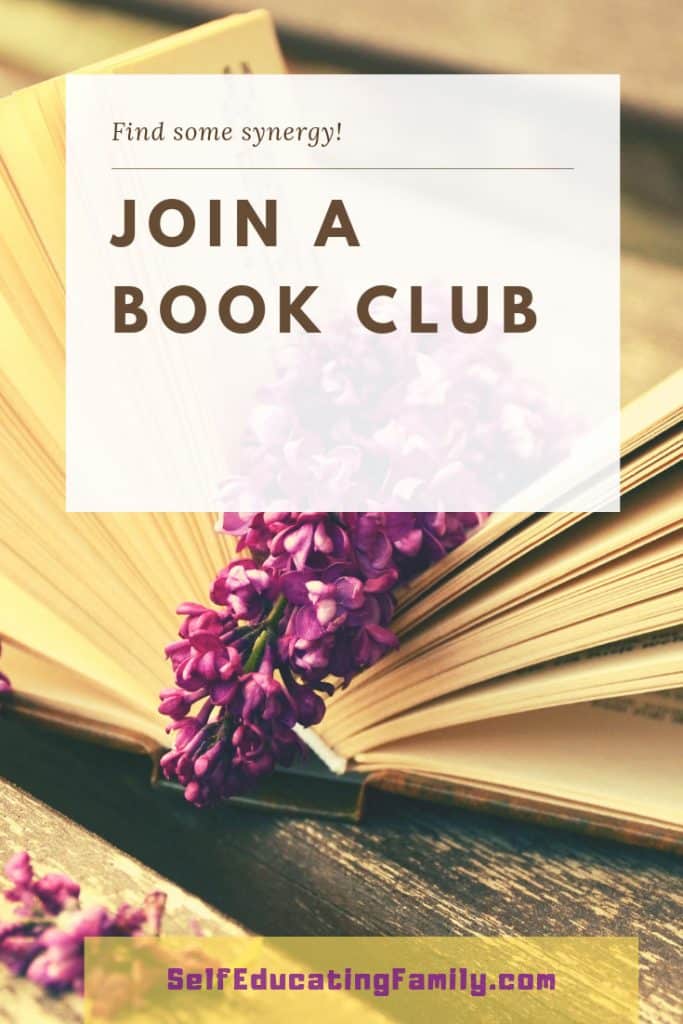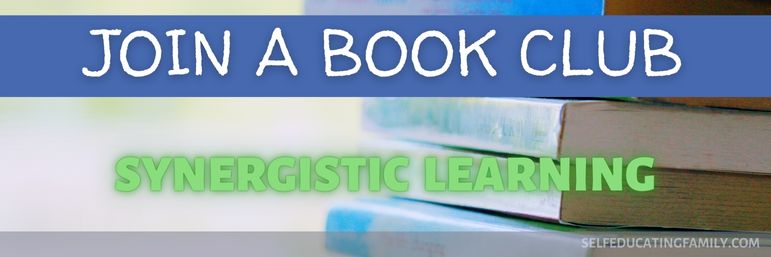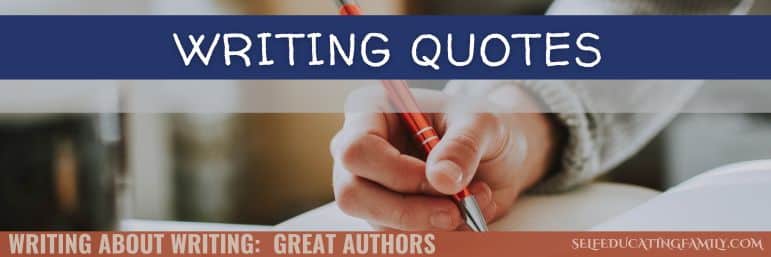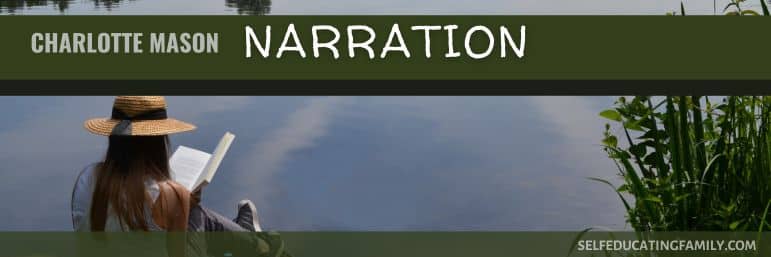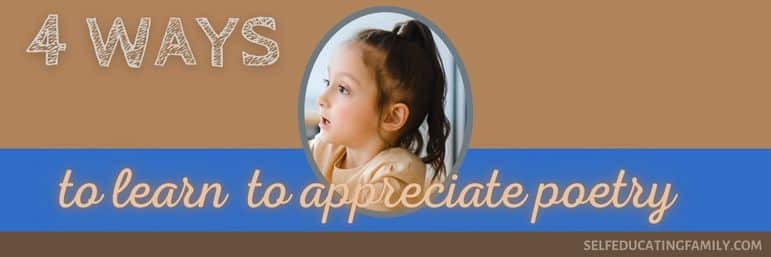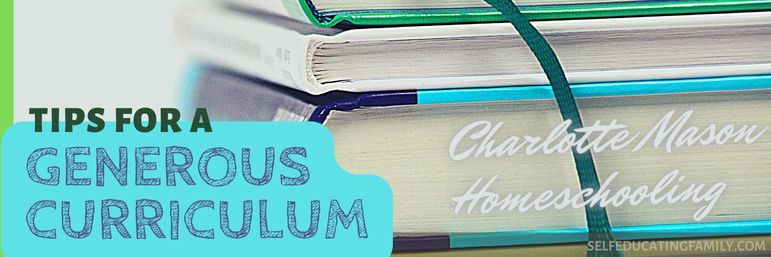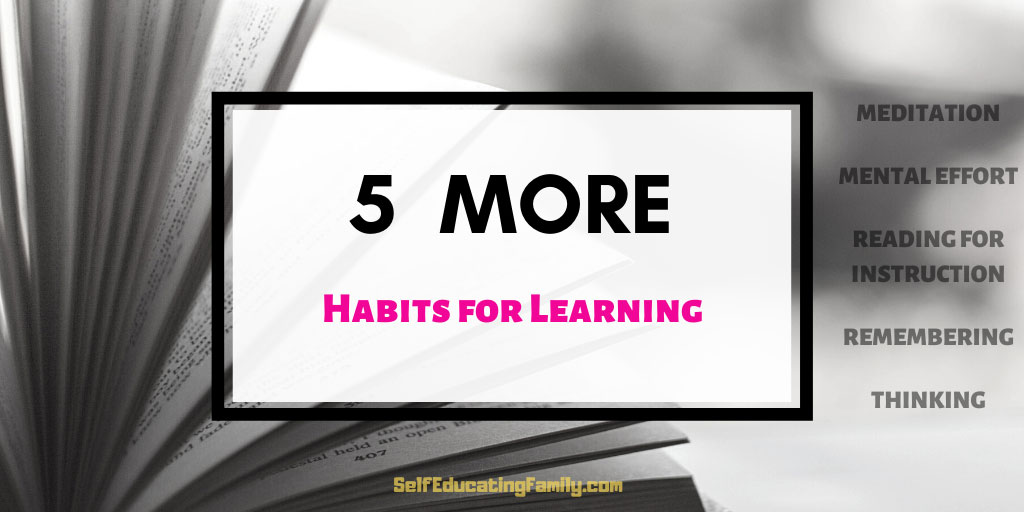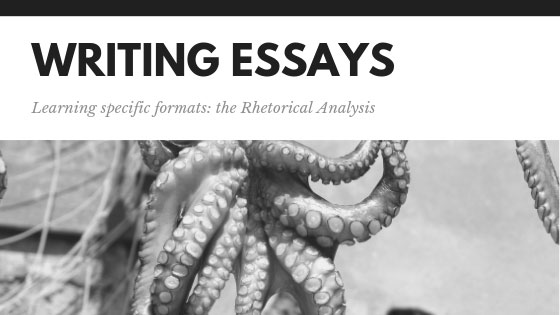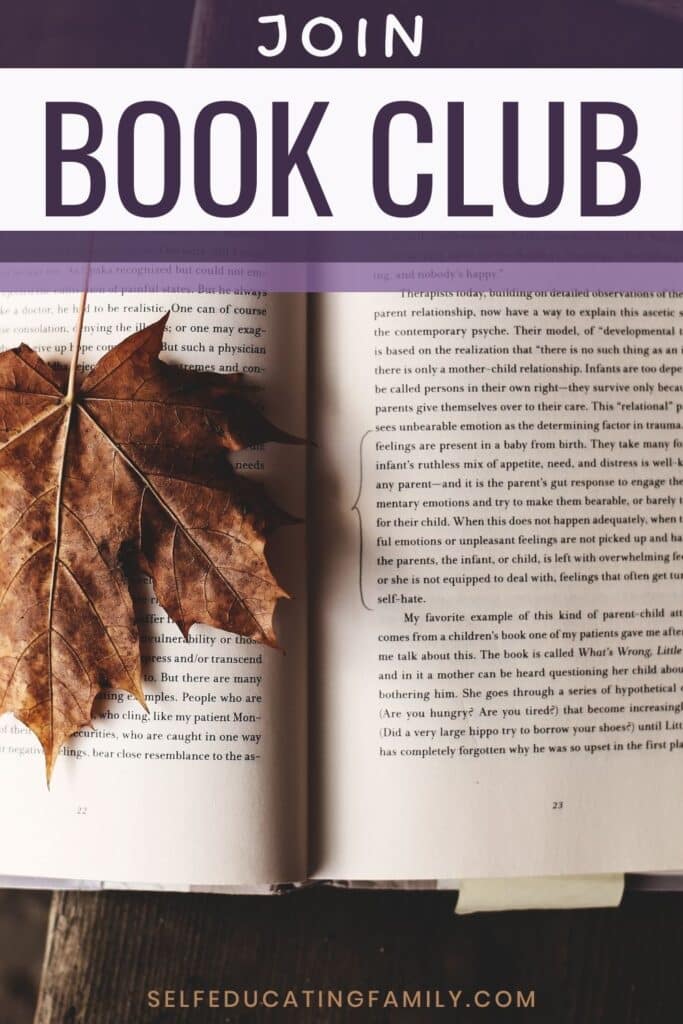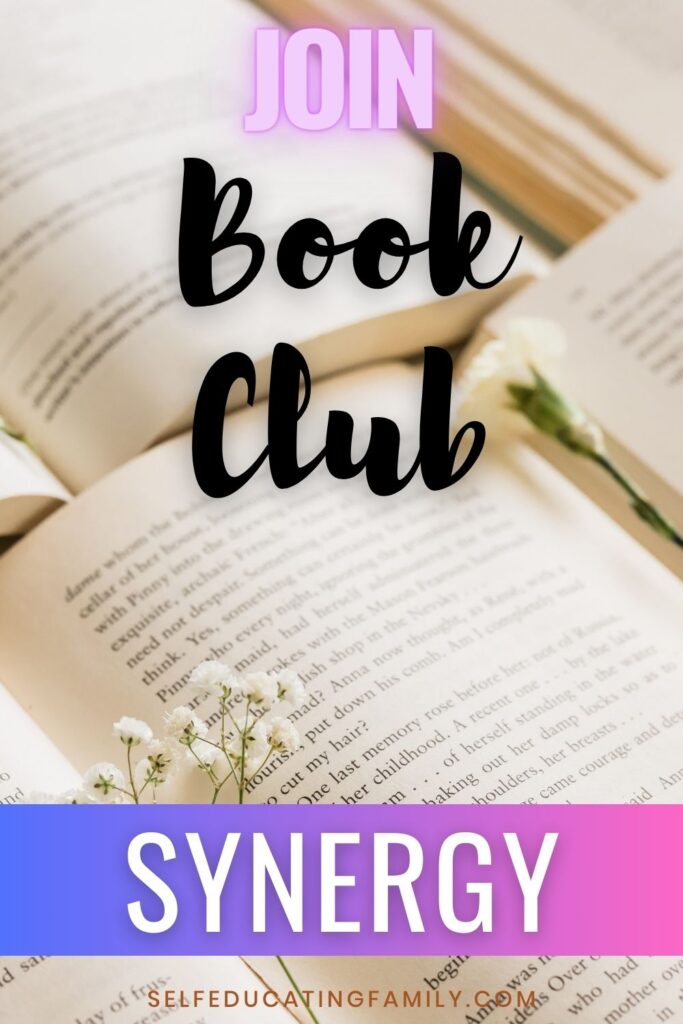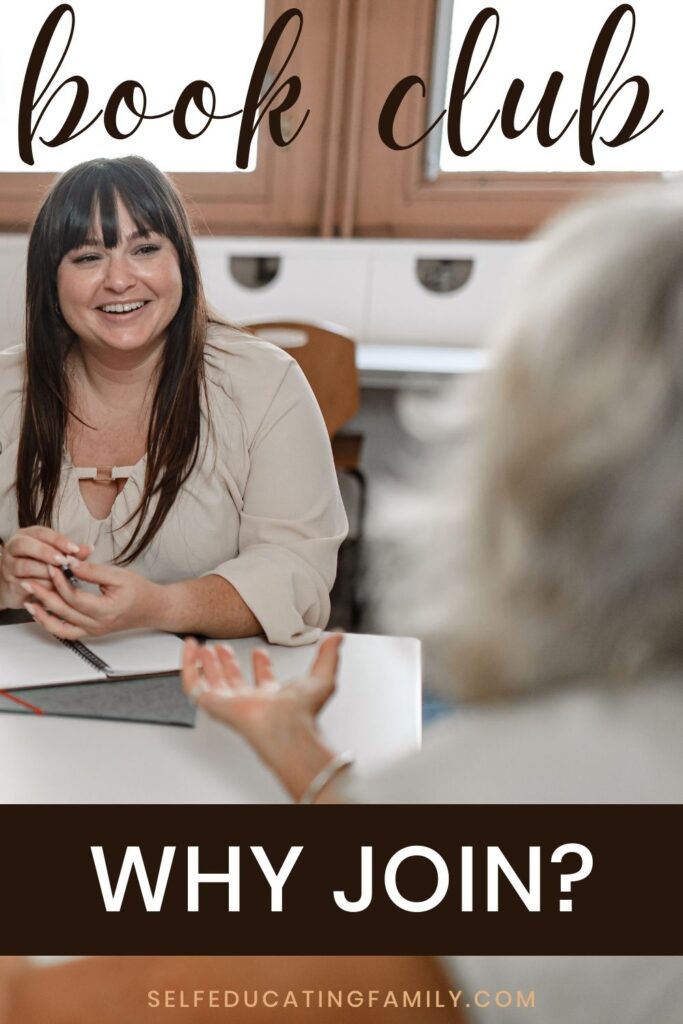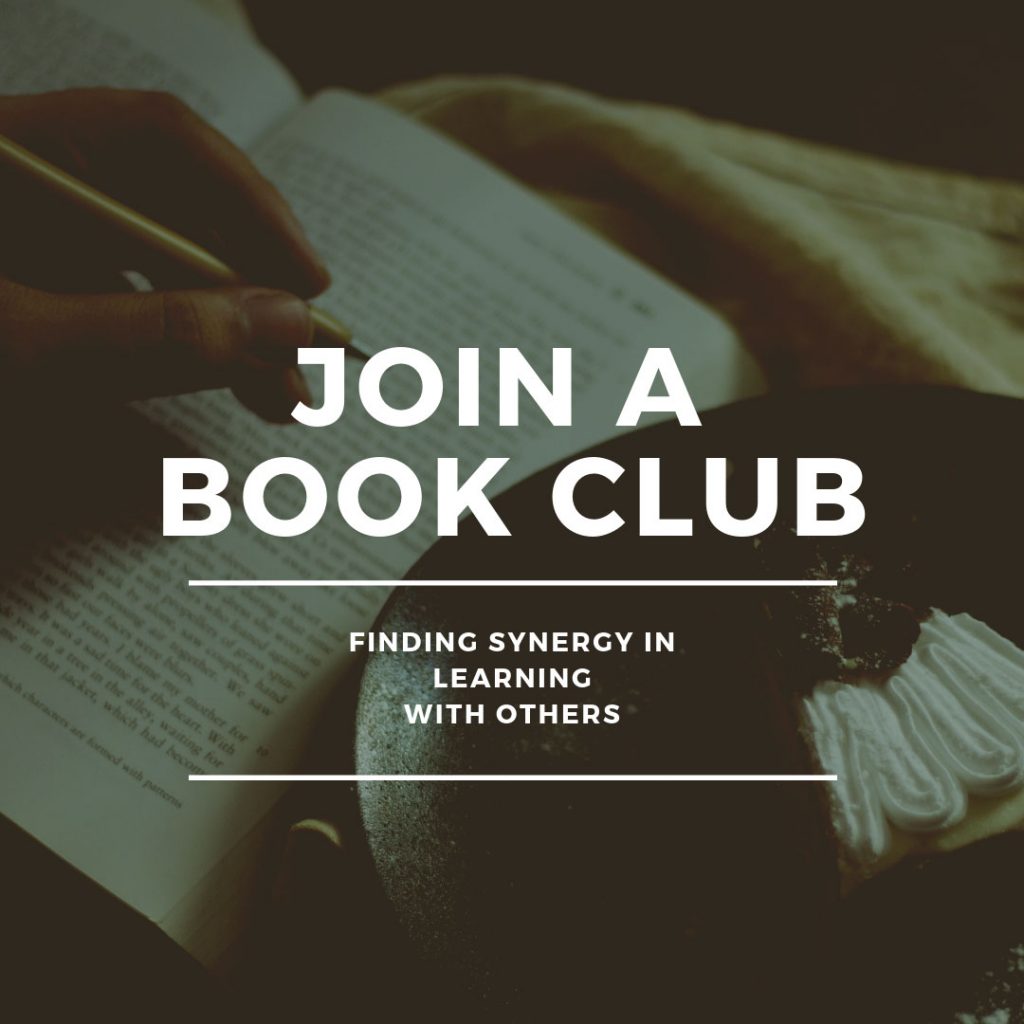What’s inside: Learn how a book club can take advantage of the synergy that you form when you build community. Joining a book club can be a great way to learn. See insights on how book club members learn from each other as we studied a book about Narration together.
Self-directed learning doesn’t always mean learning something by yourself. Self-directed learning means that you as the student manage your learning. Various tools, methods, or people can help you learn. Like joining a bunch of other people trying to learn the same thing in a study group or a book club or a Shakespeare group.
* This post may contain affiliate links. If you find my content valuable and make a purchase through one of my links, I will earn a commission at no cost to you, which helps me keep this blog going so I can help you even more! I recommend products I trust and/or use myself, and all opinions I express are my own. Read the full disclaimer here.
Learning Example
A great example of “group” self-directed learning is language immersion. If you wanted to learn a new language in a very short period of time, total immersion often is the best method – such as moving to Tokyo for 3 months to learn Japanese and only speaking that language with native speakers all the time.
Think about this for a moment – aren’t all those native speakers helping you to learn? So are you really learning by yourself? And so, we understand that “self-directed learning” is really more about your internal motivations than isolating yourself in an ivory tower with a bunch of books.
Synergy
Today, I’d like to explore the synergy of learning more within a group of people who are trying to learn the same thing by looking at an example of a book club. Each person within the group is trying to glean insights from the same book, but by discussing the book together in club, each person shares insights, which in turn leads to more insights for each person. Thus, each person goes away with more than they came in with.
That’s called synergy.
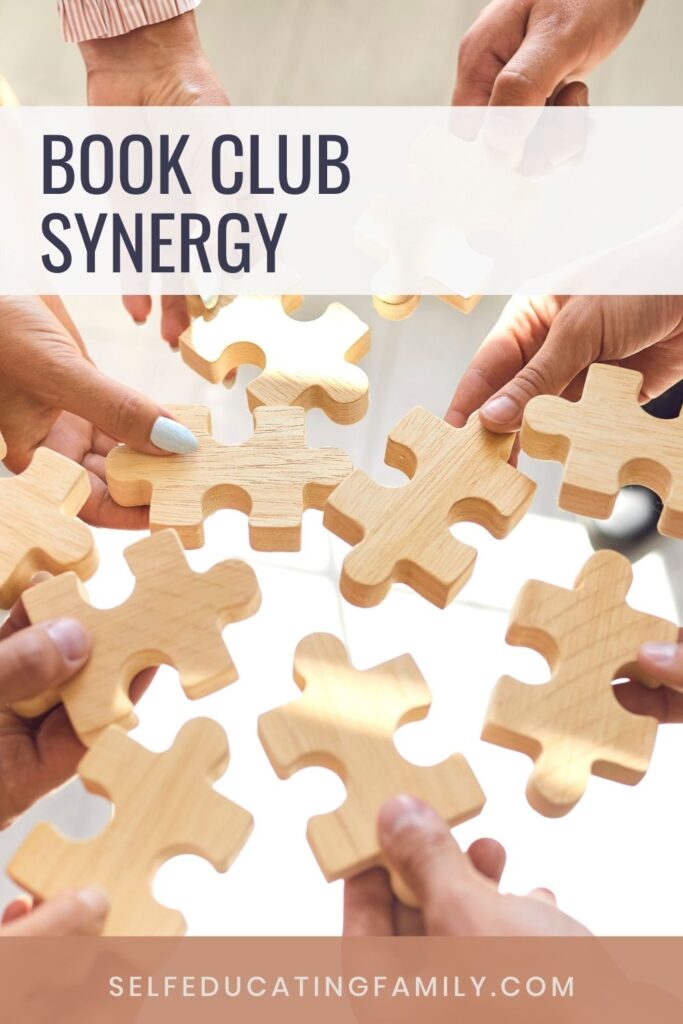
My Book Club
I belong to a Charlotte Mason (CM) Mom’s book club in which we select a book to discuss for the year. Usually, it will be a book from CM’s writings (like one of the volumes of Charlotte Mason’s Original Homeschooling Series) or books written about her writings. Together in the past, our book club has read Teaching from Rest by Sarah Mackenzie, Consider This and Mind to Mind by Karen Glass, and The Living Page by Laurie Bestvater.
This year, our book club is reading Know and Tell: the Art of Narration by Karen Glass.
We get together monthly to discuss a chapter or section of the book over tea and dark chocolate. We have moms who are just starting out as well as moms who have some grown kids.
Reality Check
Our book club attendees know that life gets busy, so we cut each other some slack if the occasion happens where one of us doesn’t get the chapter read. Those of us who have read will practice narrating the contents for the benefit of those who didn’t get a chance to read.
The reality check here tolls for me – I’m usually the one demanding a narration from the other book club-bers or trying to speed read the material in 20 minutes before the meeting, as was the case last meeting! And yet, I learned a tremendous amount in that time and even more in the meeting.
Our most recent meeting
In our last meeting, we discussed Chapter 7, “Becoming a Writer,” from Know & Tell. Earlier meetings and chapters focused on how to develop good narration skills; this chapter took it to the next level of how to turn those narration skills into writing skills – or how to transition from oral narration to written narration and then to written composition.
Attendees
Our book club had five attendees that night – Joy, Rosa, Maya, Yuki* and myself. In total, we have 13 school-aged kids ranging in age from 6 to 18 (not including 2 grown kids).
*Names have been changed to protect the innocent.
Definitions
An unplanned part of our meetings occurs regularly when the discussion turns to fundamentals. I always learn something a bit deeper. Tonight did not disappoint. We reviewed the differences in the progression of narration.
Narration
“In its simplest form, narration is simply ‘telling’.” – Karen Glass, Chapter 1, p. 1: Know & Tell
Narration is simply ‘telling.’
Karen Glass, Chapter 1, p. 1: Know & Tell
Oral Narration
The student re-tells what they have read or have had read to them. Most recommendations say to start around age 6 and not expect much. Fluency develops through consistent practice, according to Glass, and echoed by all of our attendees with older kids. We reviewed what fluency looked like – the subject is retold completely and thoroughly and includes appropriate details and the student has included personal insights or connections.
Written Narration
The written narration is simply writing what normally would have been said in the oral narration. The student can begin written narrations as soon as fluency is achieved in oral narrations. Typically, this doesn’t happen before 4th grade. Know & Tell had an extremely helpful chart on p. 85 which diagrammed when written narrations can start and how often to try them. Glass recommends starting with 1 per week and working up to daily by age 12 or 13. She equates fluency in written composition when “a child can easily write 150-300 words every day.”
By the way, the book also contains a useful chapter on “the older student,” which appealed to me because I had lacked consistency in narrations when my kids were younger. Glass asserts that it is never too late to start, which all of the moms at our book club that night agreed with, because we moms have each been practicing improving our narration skills as well as using the techniques with our kids.
Written Composition
Written composition can begin when written narration is fluent. It differs from narration because it includes the technical aspects of writing. In other words, you haven’t done any corrections on the written narration, but instead, allow the child to read the narration to you.
We learned not to make corrections in Chapter 5 and it was a revelation to most of us. And we all confessed to marking up written narrations and using misspelled words on spelling lists. We encouraged each other to RESIST! Just be patient! Eventually, they will write those five paragraph essays or those rhetorical analyses.
And that brought us to the heart of our chapter for the evening.
Discussion
We followed the chapter outline, making numerous side comments.
Part 1: Introduce the Craft of Writing
I have to say that we got bogged down in this section. Even starting out in the section called “Narration Lays a Foundation for Writing,” we all started comparing where we were in the process.
On Writing Well by William Zinsser
Glass’s book recommends two resources for the craft of writing: one on writing craft itself – like the Zinsser book, and a handbook on mechanics – like Strunk & White’s The Elements of Style. She suggests these two kinds of books to replace a specific traditional writing curriculum. Then she proceeds to tell you how to use them.
Yuki, who is new to homeschooling and CM with kids aged 11, 5 & 3, said that they tried to use a regular English curriculum before trying CM methods. She and her kids were so relieved when they switched to CM methods of teaching! CM doesn’t crush their love of learning. She can’t wait to try these books when her kids reach the stage of crafting writing.
This started an avalanche of discussion in our book club! Joy, who loves books and writing, already owned both recommendations – her mom, who also loves books, gave the Zinsser book to her a while ago but she hadn’t had a chance to read it yet. Rosa, who has 2 high schoolers and 1 middle schooler, used Strunk & White in 9th grade, just reading a small section together and talking about it. Joy mentioned newer is not always better – classic references like Strunk & White are timeless. Even I had used the reference while I was writing instructional design courseware back in my pre-homeschooling days.
Section: “Like Narration, Composition is an Art to be Practiced”
We all mentioned how much we are enjoying hearing Karen Glass’s recommendations for age ranges and various competencies to look for. Rosa mentioned that switching subjects of written narration between history, biographies, literature, science, etc. definitely keeps it fresh.
For instance, in this section, she mentions that students who are comfortably writing a narration every day are ready to begin composition. Fluent writing across their subjects is what you are looking for. This triggered more discussion on where everyone was in the process.
We talked about the age when transition from writing narrations to writing compositions happens (between ages 12 and 14, according to Glass). Interestingly, Maya’s oldest (age 11) who is a perfectionist and excelled at oral narration, was hesitant to write narrations. Maya is very careful to go slowly.
We talked about how perfectionists often have a hard time with initial writing attempts due to fear of excessive errors. To ease anxiety, Maya told her oldest that she wasn’t going to look at or “grade” the written narration. That was key for her – her child’s 1st narration ended up being 2-1/2 pages long at age 11. She does 2 per week now.
The other moms with older kids said that 2 per week at age 11 was advanced – they cautioned Maya to make sure the task of writing doesn’t become burdensome and squelch learning. We all agreed that not burning out is important to keep the love of learning!
Part 2: Practice the Craft of Writing
Glass quotes Zinsser:
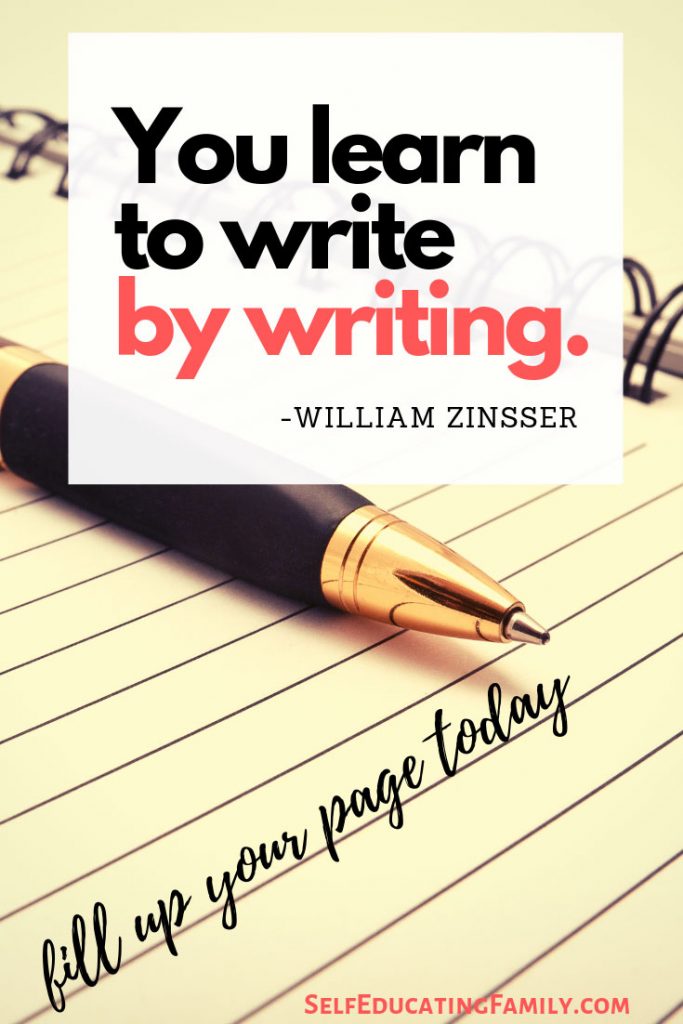
During book club, the moms with older kids agreed with Glass’s recommendations when she said that this was just one way to accomplish the goal of developing the craft of writing (p. 103). My older boys became fluent through their 9th and 10th grade English & History classes which required weekly essays. By the time Rosa’s high school junior was taking AP English Language and Composition, she had become fluent through methods very similar to Glass’s approach. So we all discussed why we thought these methods work well.
We then had a spirited discussion on editing and on the five-paragraph essay. Joy said that she had many challenges when learning the five-paragraph for the first time in 12th grade when she moved to the U.S. from Italy. She said that in Italian, the rough draft is called la brutta copia, or the “ugly” copy, which we all found funny! She found the five-paragraph essay tedious and formulaic and stunted a writer’s voice.
While we agreed, we all knew that to be considered competent in writing in English, you have to be able to write in this style. Rosa agreed with Glass’s assessment that you can quickly teach a 16-year old how to master this style if they have been following this method for some time. She referred back to her daughter taking AP English who has not had her love of writing squelched and can easily write a five paragraph essay even on a boring subject.
Part 3: Developing the Craft of Writing
We pretty much ran out of time and really didn’t get much discussion on the rest of the chapter!
What we Loved about this Chapter
Hands down, our favorite parts were the lists, the charts and the “To the Student” sections. The list of “Ideas for Creative Written Narrations” on p. 105 of Know & Tell, excited all of us. We were going home armed with ideas to try, like cartooning, using flow charts (geek alert – I loved this idea and so will my math/science children), and writing from a particular point of view.
All in All
The members of our book club always seem to generate great discussions. We all leave with new ideas to work on and we always learn from each other. It can be a great way to synergize your learning.
Related posts
